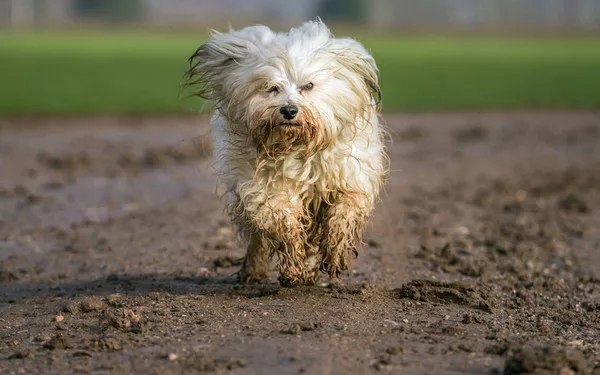The allure of a German Shepherd Husky mix, often referred to as a Gerberian Shepsky, lies in its captivating blend of two distinguished breeds. As prospective pet parents embark on the journey of bringing home a Gerberian Shepsky puppy, a common question looms large: How big will the puppy grow to be? Unraveling the mysteries behind the size of this unique hybrid involves delving into the genetic makeup, environmental factors, and careful consideration of parental characteristics.
The Genetic Dance: Influencing Size through Heritage
Genetics plays a pivotal role in determining the size of a German Shepherd Husky mix. These hybrid dogs inherit a combination of genes from their German Shepherd and Siberian Husky parents, and predicting their ultimate size requires a nuanced understanding of the contributions from each side.
German Shepherd Influence
German Shepherds are known for their stately appearance, with males typically standing between 24 to 26 inches at the shoulder and females ranging from 22 to 24 inches. Their weight typically falls between 65 to 90 pounds. These robust dimensions are influenced by the breed’s history as herding and working dogs, demanding strength and agility.
When a Gerberian Shepsky inherits more genes from the German Shepherd parent, there’s a higher likelihood of larger size. Traits such as a strong, well-muscled body and a robust frame are more pronounced in pups with a predominant German Shepherd influence.
Siberian Husky Influence
On the other end of the spectrum, Siberian Huskies are medium-sized dogs, with males standing at 21 to 23.5 inches and females at 20 to 22 inches. Weighing between 45 to 60 pounds, Huskies are known for their endurance, speed, and striking wolf-like appearance.
If the genetic scale tilts more towards the Siberian Husky side, a Gerberian Shepsky may exhibit a more moderate size. Traits such as a compact build, erect ears, and a thick double coat are more evident in those with a stronger Siberian Husky genetic influence.
Size Variations within the Litter
A litter of Gerberian Shepsky puppies can exhibit considerable size variations. This diversity arises from the random assortment of genes during the reproductive process. While some puppies may inherit more genes from the German Shepherd parent, others may lean towards the Siberian Husky side.
It’s not uncommon to witness a range of sizes within the same litter, showcasing the genetic diversity that makes each Gerberian Shepsky unique. This natural variability adds an element of surprise for pet owners, making it challenging to predict the size of an individual pup with absolute certainty.
Environmental Factors: The Unseen Architects of Growth
While genetics lay the foundation for a Gerberian Shepsky’s size, environmental factors play a crucial role in shaping their growth trajectory. These factors include nutrition, exercise, and overall health care during the crucial developmental stages.
Nutrition
Proper nutrition is a cornerstone of healthy growth in any dog breed, and Gerberian Shepskies are no exception. Puppies require a balanced diet rich in essential nutrients to support their rapid growth and development. The quality and quantity of food provided during the puppy stage can significantly influence their ultimate size.
Overfeeding or underfeeding can lead to growth abnormalities and impact the overall health of the Gerberian Shepsky. Consultation with a veterinarian to determine an appropriate feeding regimen based on the individual pup’s size, age, and activity level is paramount.
Exercise
Regular exercise is essential for the physical and mental well-being of Gerberian Shepskies. Both German Shepherds and Siberian Huskies are active breeds with a history of performing demanding tasks. As a result, Gerberian Shepsky puppies thrive in environments that provide ample opportunities for play, exploration, and exercise.
A sedentary lifestyle or lack of physical activity can lead to weight gain and potential health issues. Conversely, excessive exercise, especially in growing puppies, may contribute to joint problems. Striking a balance and tailoring exercise routines to the individual pup’s needs is crucial for fostering optimal growth.
Parental Characteristics: Clues to the Future
Examining the size and characteristics of the Gerberian Shepsky’s parents can offer valuable insights into the potential size of the puppy. While it’s not an exact science, observing the stature, weight, and physical traits of the German Shepherd and Siberian Husky parents can provide a general idea of the direction the pup’s size may take.
If both parents are on the larger end of the size spectrum for their respective breeds, there’s a higher likelihood that the Gerberian Shepsky puppy will also be larger. Conversely, if one or both parents are more petite, the puppy may follow suit in terms of size.
Male vs Female: Gender Dynamics in Size
In many dog breeds, there’s a discernible size difference between males and females. German Shepherds and Siberian Huskies are no exception. Male German Shepherds tend to be larger and heavier than their female counterparts, while Siberian Huskies often exhibit a more subtle size difference between the genders.
When considering the potential size of a Gerberian Shepsky, it’s important to factor in the gender dynamics. Male puppies may generally grow to be larger than females, with variations influenced by genetic and environmental factors.
When Will They Stop Growing?
The growth trajectory of a Gerberian Shepsky follows a predictable pattern, with distinct phases characterized by rapid development during the puppy stage and a gradual tapering off as they reach adulthood.
Puppyhood
During the first six months of life, Gerberian Shepsky puppies experience significant growth. They undergo a rapid phase of development, both physically and mentally. Owners may notice a substantial increase in height, weight, and overall size during this period.
Adolescence
Between six months and one year, the growth rate begins to slow down, but the Gerberian Shepsky continues to fill out and develop muscle mass. This stage is crucial for providing a balanced diet and monitoring exercise to support healthy growth without putting undue stress on developing joints.
See Also:A Guide on How to Care for Your German Shepherd’s Coat
Adulthood
The final stage of growth occurs between one and two years of age. By this point, most Gerberian Shepskies reach their adult size, although some may continue to fill out and mature slightly beyond the two-year mark. It’s during this period that the owner can observe the dog’s full-grown stature and appreciate the unique blend of German Shepherd and Siberian Husky characteristics.
Final Thoughts: Nurturing the Perfect Companion
While predicting the exact size of a Gerberian Shepsky may be challenging due to the interplay of genetics and environmental factors, conscientious care and attention to their specific needs will undoubtedly contribute to their overall well-being. As these charismatic hybrids grow from curious puppies to majestic adults, the journey is marked by the joy of companionship and the fulfillment of being a responsible pet owner.
Understanding the nuances of their genetic heritage, recognizing the impact of environmental factors, and appreciating the individuality of each pup within a litter are key elements in demystifying the question, “How big will a German Shepherd Husky mix puppy get?” As prospective owners embark on this exciting adventure, armed with knowledge and a commitment to providing the best possible care, they are poised to witness the transformation of their Gerberian Shepsky into a loyal and loving lifelong companion.
Related Topics:
How Much Does the Most Expensive German Shepherd Dog Cost?
Why German Shepherds Put Their Paw on You?
How Long it Takes to Potty Train a German Shepherd Puppy?


























